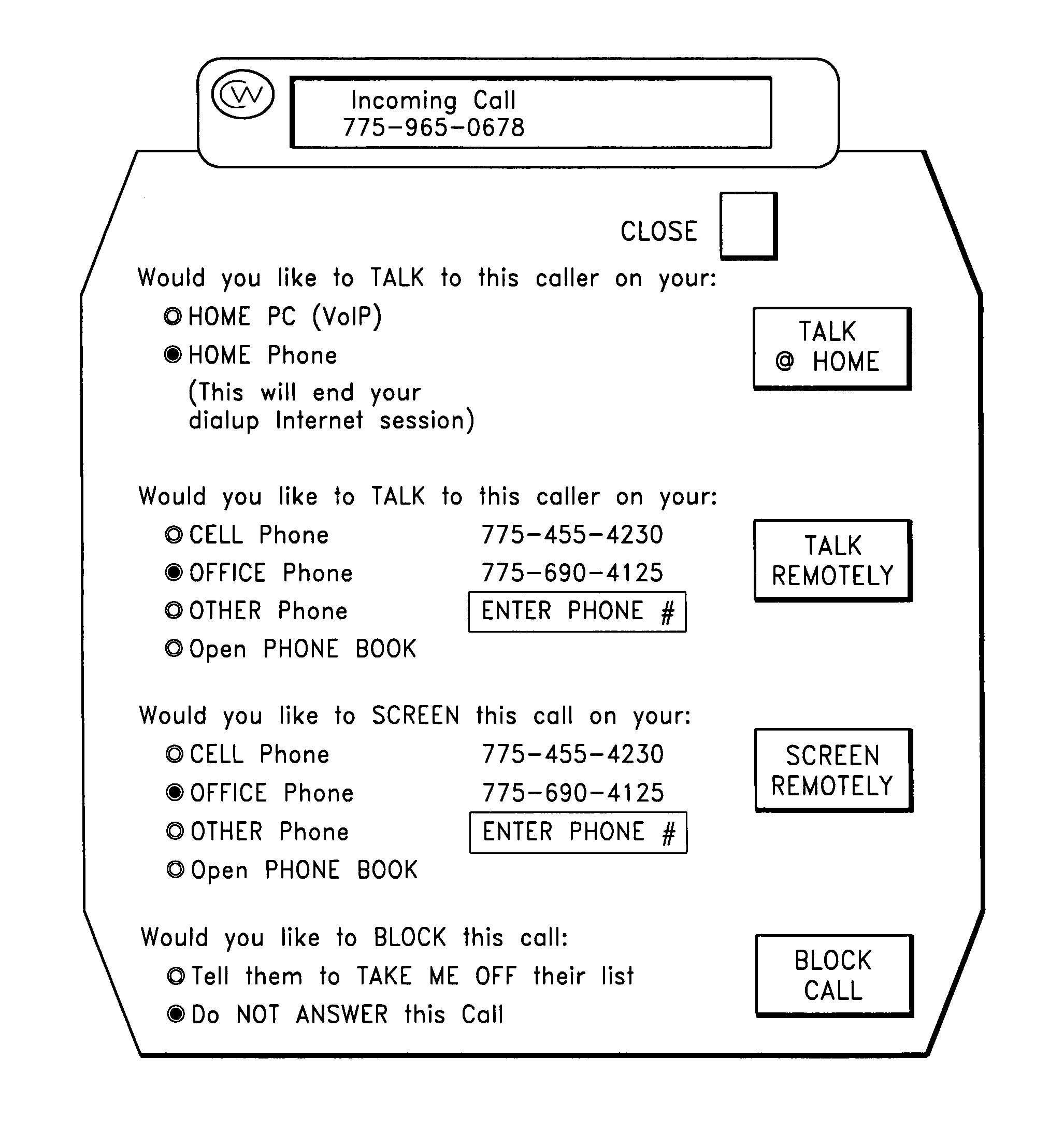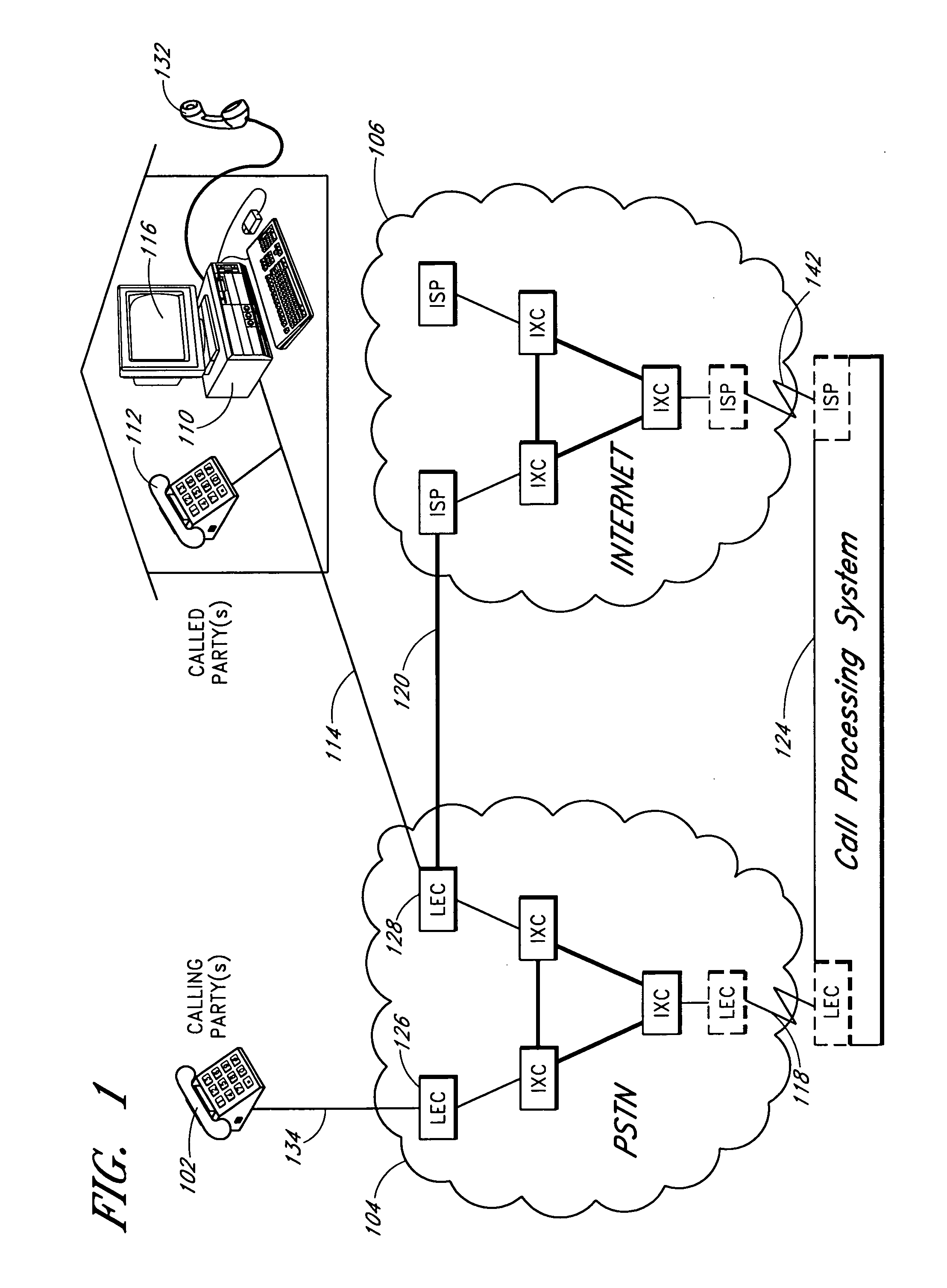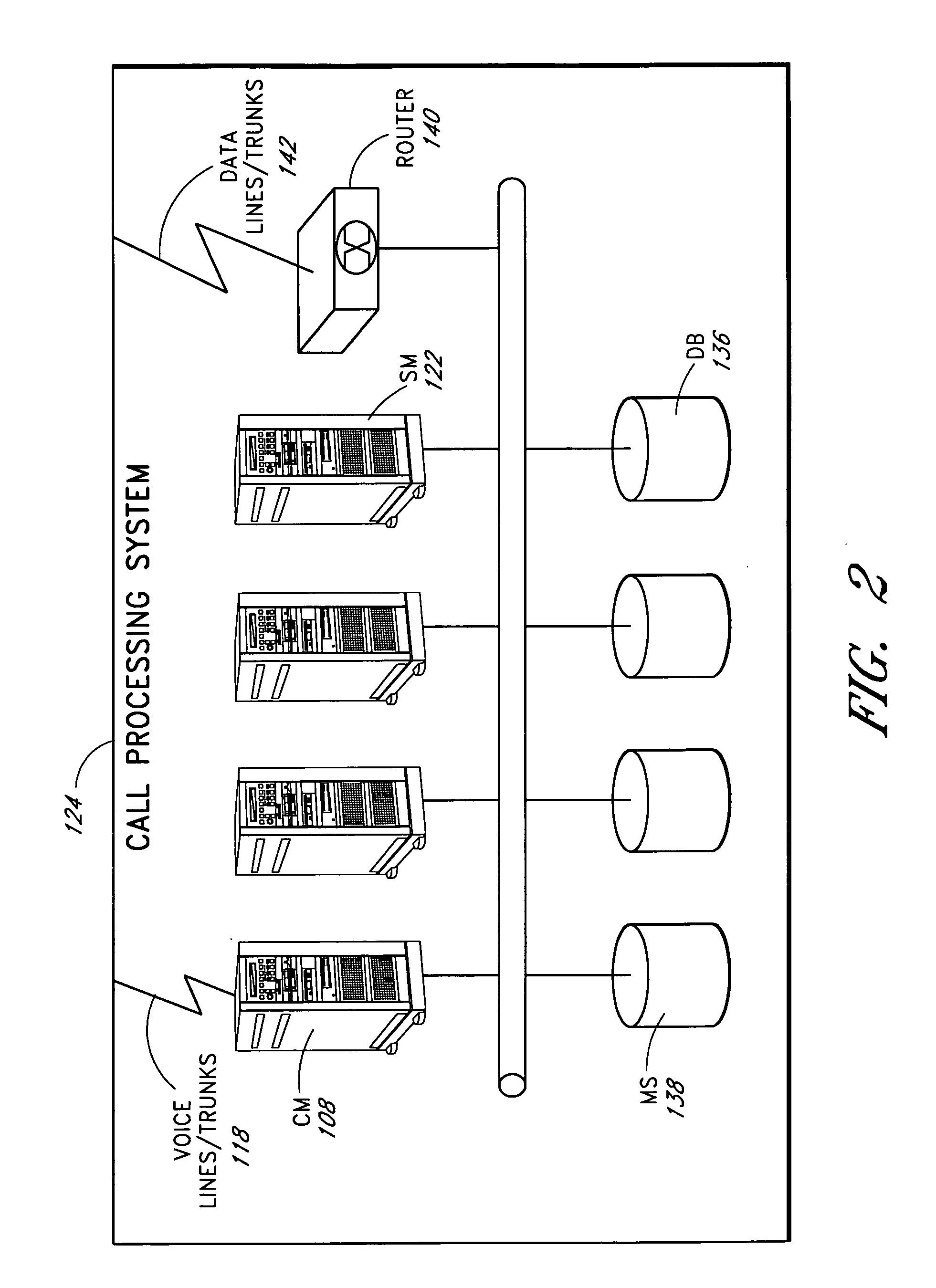Methods and systems for telephony call-back processing
a call-back processing and telephone technology, applied in the field of telecommunications, can solve the problems of not allowing message screening, and not being able to handle busy calls, so as to reduce call costs and improve call quality
- Summary
- Abstract
- Description
- Claims
- Application Information
AI Technical Summary
Benefits of technology
Problems solved by technology
Method used
Image
Examples
example call
[0227] Example call logging will now be described.
[0228] A CDR (call detail record) is optionally logged and stored for the incoming call and / or the auto-transferred call in association, with an identifier to associate the incoming call and the auto-transferred call. One or more of the following call details can be recorded: [0229] An indication (such as one or more bits or alphanumeric characters) that the call is an auto-transfer call. [0230] An indication as to whether a call auto-transfer was attempted and whether the subscriber answering the auto-transfer call chose to take the call. [0231] The auto-transfer connect duration. [0232] The called number type for the auto-transfer outcall. [0233] The auto-transfer connect phone number for the auto-transfer call. [0234] An indication that an auto-transfer outcall ended because the call was transferred
[0235] With respect to connected calls, some or all of the following example information can be stored in corresponding CDR log field...
PUM
 Login to View More
Login to View More Abstract
Description
Claims
Application Information
 Login to View More
Login to View More - R&D
- Intellectual Property
- Life Sciences
- Materials
- Tech Scout
- Unparalleled Data Quality
- Higher Quality Content
- 60% Fewer Hallucinations
Browse by: Latest US Patents, China's latest patents, Technical Efficacy Thesaurus, Application Domain, Technology Topic, Popular Technical Reports.
© 2025 PatSnap. All rights reserved.Legal|Privacy policy|Modern Slavery Act Transparency Statement|Sitemap|About US| Contact US: help@patsnap.com



